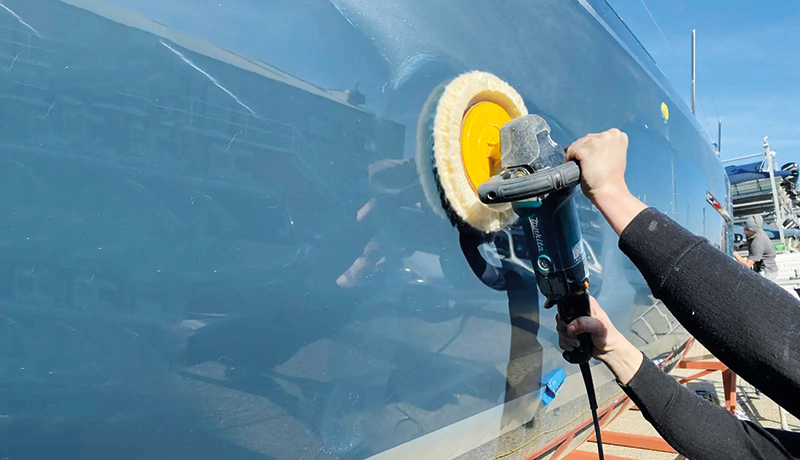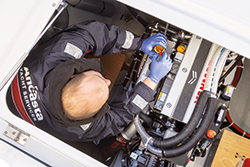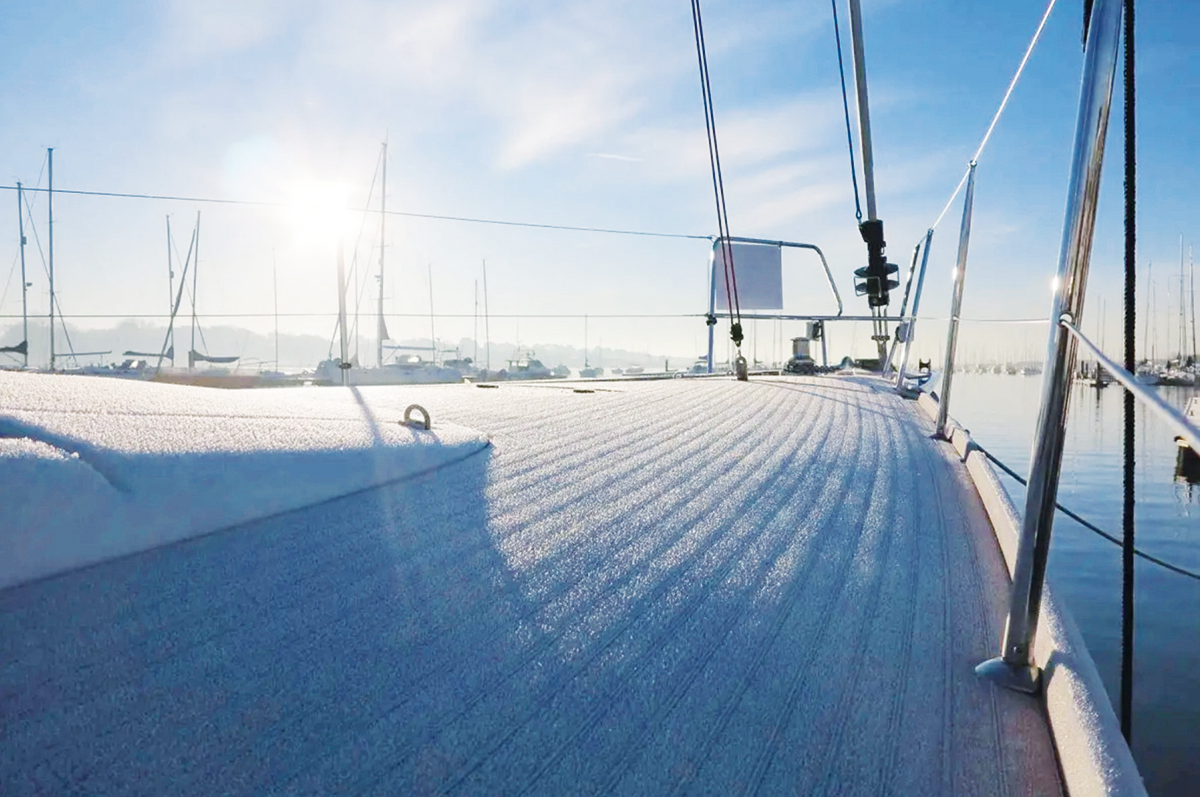 We spoke to Paul Hardy at Ancasta Yacht Services to find out how using the ‘off’ season wisely can protect your boat, boost performance and extend her lifespan.
We spoke to Paul Hardy at Ancasta Yacht Services to find out how using the ‘off’ season wisely can protect your boat, boost performance and extend her lifespan.
As autumn settles in and the clocks go back, many boat owners understandably move their attention ashore. It is tempting to lock up, walk away and wait for spring, but winter does not have to be a season you simply endure. In fact, it can be one of the best times to give your boat the attention she deserves.
Winter is the ideal opportunity to show your boat – whether power or sail – some TLC and prepare her for the season ahead – even if that feels a long way off right now. Whether she is staying afloat or coming ashore, these quieter months are perfect for thorough checks, maintenance and repairs that will keep her running beautifully when it is time to head out again.
WHY WINTERISE?
Winterisation is not just about getting your boat through the colder months – it is about preserving its condition, reliability and value. From salt and UV to wind, waves and vibration, boats work hard all year. Left unattended in winter, moisture and fluctuating temperatures can quietly cause costly damage.
“The best way to protect your boat over winter is to haul her out, cover her properly and make sure systems are drained, cleaned and checked,” says Paul. “Even if she is staying afloat, regular checks and preventative work are essential – a quick walk-through can spot leaks or developing issues before they escalate.”
CLEAN AND DRY
A clean, dry boat will always fare better during periods of inactivity. Give her a thorough top-to-keel wash: scrub decks, non-slip areas, cockpit lockers, topsides and bathing platforms. Remove grime, salt and any fouling. Pay close attention to stainless fittings, cleats, rails and winches as corrosion can set in quickly if left unchecked.
Canvas work – from sprayhoods and sail covers to cockpit enclosures and biminis – should be washed, dried and stored. Sails should be removed, as UV damage is a risk if left exposed, and stored in a dry, ventilated area to prevent mildew.
It is always best to carry out any repairs to either canvas or sails before storing to avoid any last-minute issues when spring comes around – and should something need replacing, there is ample time to get this done.
Below deck or in the cabin, remove perishables, prop open lockers and leave fridge and freezer doors ajar. Lift cushions, take home what you can and consider a heater, dehumidifier or moisture-absorbing crystals if the boat will be shrink-wrapped or sealed up for the winter.

DECK GEAR, RIGGING AND HARDWARE
Your deck equipment works hard all year and needs attention to remain safe and reliable.
Motorboats: Check the windlass for smooth operation and signs of wear, lubricate moving parts and rinse away salt. Inspect davits, tender cranes and boarding ladders for corrosion or stiffness. Service hydraulics, check hoses and seals, and examine anchor chain, swivels and shackles for wear.
Sailing yachts: Complete all the above, plus additional rigging checks. Inspect standing rigging for cracks, rust staining or broken wire strands, and replace if near the 10-year mark. Wash and check running rigging for chafing or stiffness. Service winches, blocks, travellers and jammers so they operate smoothly and safely.

Under the waterline: If you are hauling out, take the opportunity for essential hull maintenance:
– Remove old antifoul, inspect and reapply.
– Inspect for blisters, cracks or osmosis.
– Replace anodes if more than 50 per cent worn – vital for corrosion protection.
– Polish topsides and superstructure to shield against UV and restore shine.
ENGINES, DRIVES AND SYSTEMS
 A dependable propulsion system (whether sail-assisted or all-engine) is your lifeline.
A dependable propulsion system (whether sail-assisted or all-engine) is your lifeline.
Engine service: Change oil and filters, flush coolant, check belts and replace impellers. Service fuel filters, gearbox or outdrive oil, and fog cylinders if storing long-term. For twin engines or high-performance set-ups, ensure both are synchronised. Outboard motors, including portable ones for tenders, will also need to be removed and serviced.
Fuel: Fill diesel tanks, add stabiliser and run engines to circulate treated fuel. Petrol-powered boats should be particularly careful with stabilisation to prevent phase separation.
Batteries: Disconnect, clean terminals, top up with distilled water (if lead-acid) and store in a cool, dry place – or use a trickle charger if left onboard.
Motorboat extras: Inspect stern gear, shafts, seals and P-brackets. Check trim tabs, bow/stern thrusters and jet drives.
PLAN AHEAD FOR A SMOOTH SPRING START
Whether you are preparing a weekend cruiser, a bluewater sailing yacht or anything in between, winter is the smartest time to invest in your boat so she is ready to go the moment you are.
“Our winter servicing slots fill up quickly, especially for major repairs or upgrades, so it is best to book early to avoid delays when spring arrives,” concludes Paul.
 Part of the Ancasta Group, Ancasta Yacht Services is a professional yacht refit, repair and services company with a team of highly skilled craftsman, with excellent facilities based in Hamble, Southampton. ancasta.com/yacht-services
Part of the Ancasta Group, Ancasta Yacht Services is a professional yacht refit, repair and services company with a team of highly skilled craftsman, with excellent facilities based in Hamble, Southampton. ancasta.com/yacht-services
















